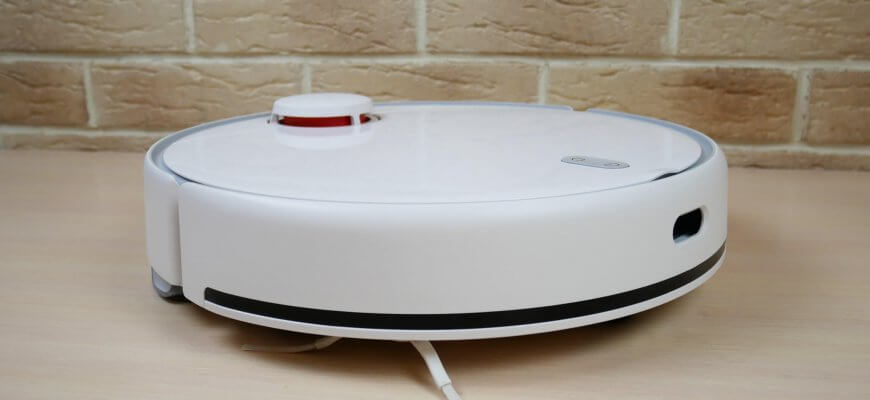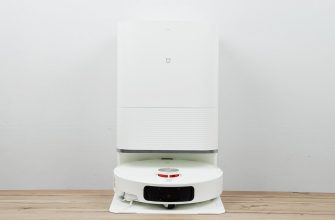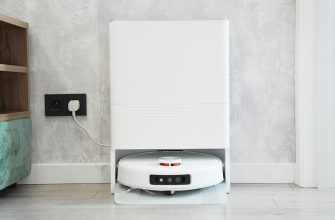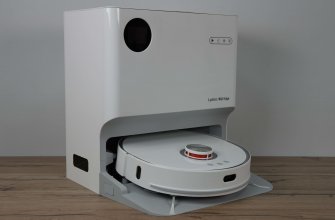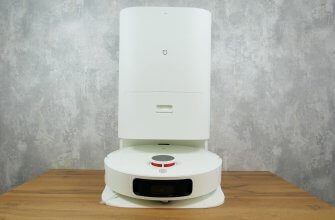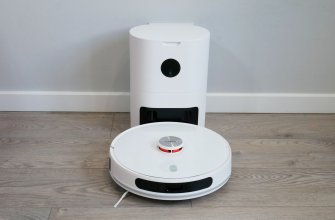Hey guys, welcome to RobotObzor! Today we’ll review a new Xiaomi robot vacuum cleaner called Xiaomi Mijia Robot Vacuum Mop 2 (Xiaomi Mijia Sweeping And Dragging Robot 2). Model number MJST1S. This robot is the updated version of the popular Xiaomi Mijia LDS Vacuum Cleaner. First of all, Mijia engineers decided to update the mopping function. The water container is attached from the bottom, and the container itself can vibrate, creating 10000 vibrations a minute, which helps get dirt off easier and more efficiently. Other than that, the suction power is higher, there are some new functions, and the turbo brush design got changed. With that, the price is a little higher reaching $350. Later I’ll test and review XIAOMI MIJIA 2, after which I’ll give y honest opinion on whether or not this is the robot for you, and if the upgrades are actually noticeable. And so, let’s get started!
Package
The vacuum came in this box. I’ll start by saying that Mijia Robot Vacuum Mop 2 – is the Chinese version, and all of its documents are in Chinese. Hopefully we get to see a global version very soon.
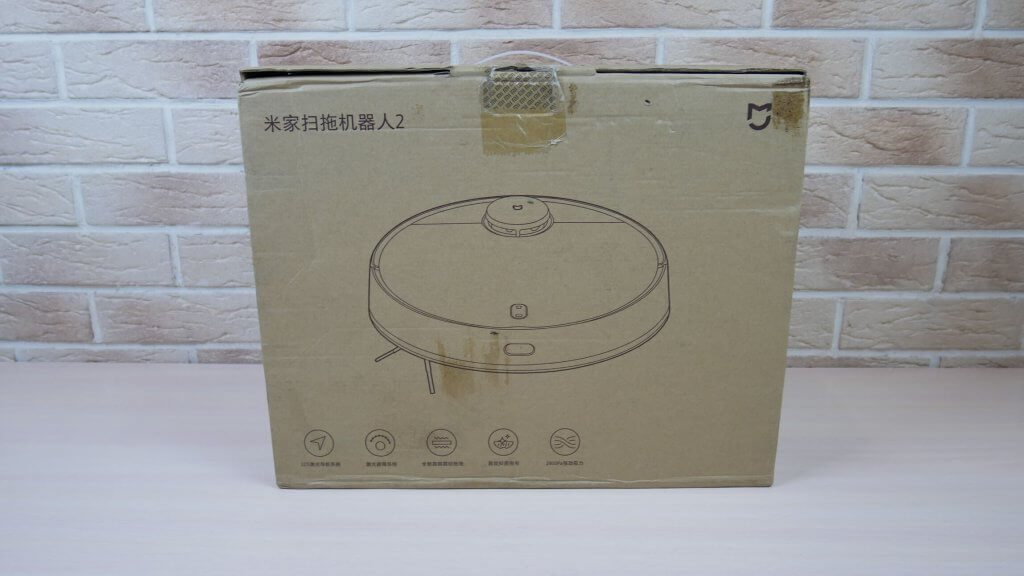
In the box is:
- The charging base.
- An adapter with a European plug.
- A mopping nozzle with a microfiber cloth attached.
- An extra side brush.
- An extra napkin.
- Documents.
- A manual on cleaning and maintaining the robot vacuum cleaner.
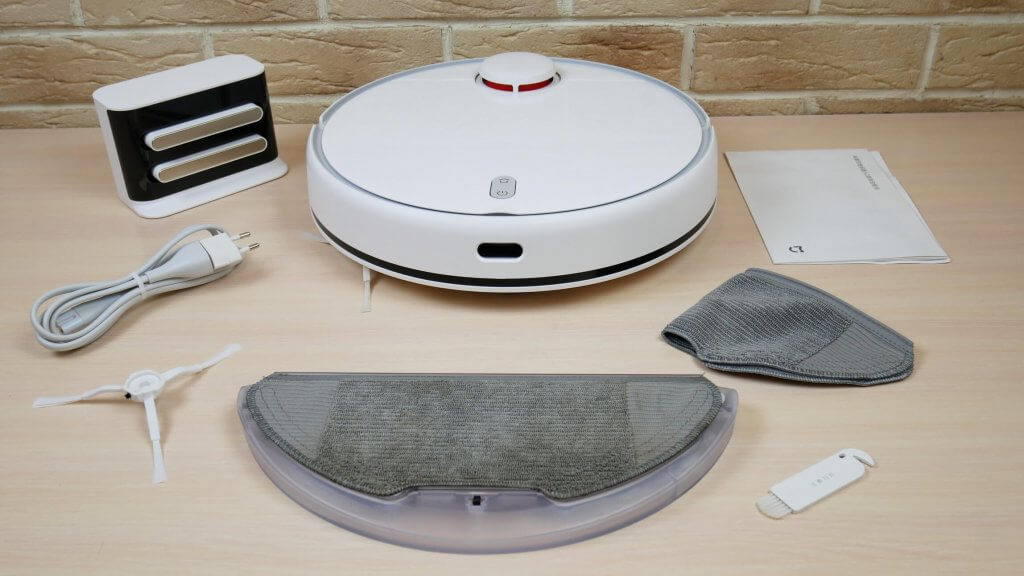
As we can see, Xiaomi started being more generous with their packages. An extra HEPA-filter would’ve been the cherry on top. But even without it, I’m still thankful for what we got.
Design
Now, let’s see how Xiaomi Mi Robot Vacuum Mop 2 works. It comes completed in white. The LIDAR is responsible for the navigation. On the mechanical bumper at the front is an object sensor, and on the back are plugs for charging. The robot measures 3.7 inches or 9.5 centimeters from the floor.
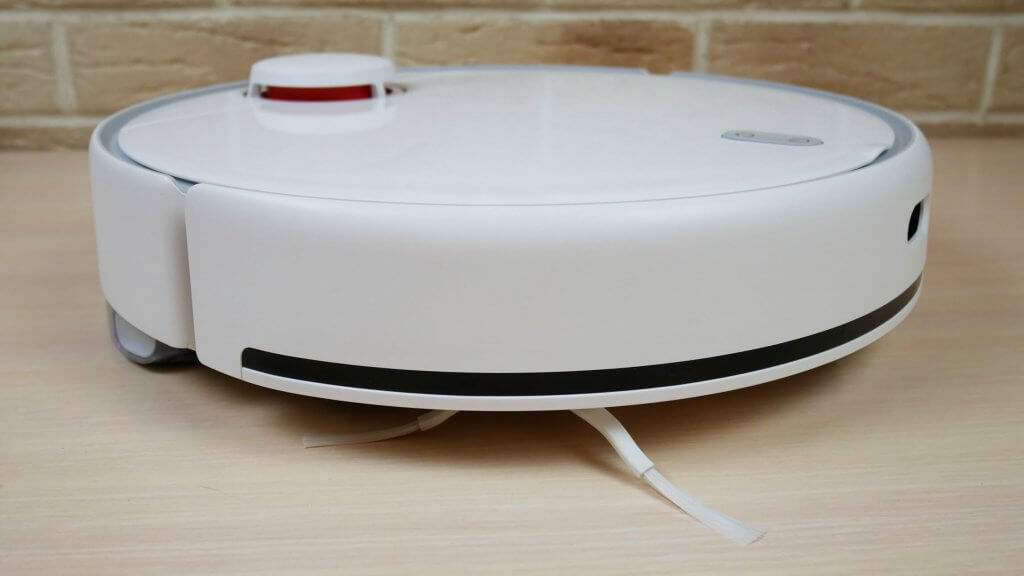
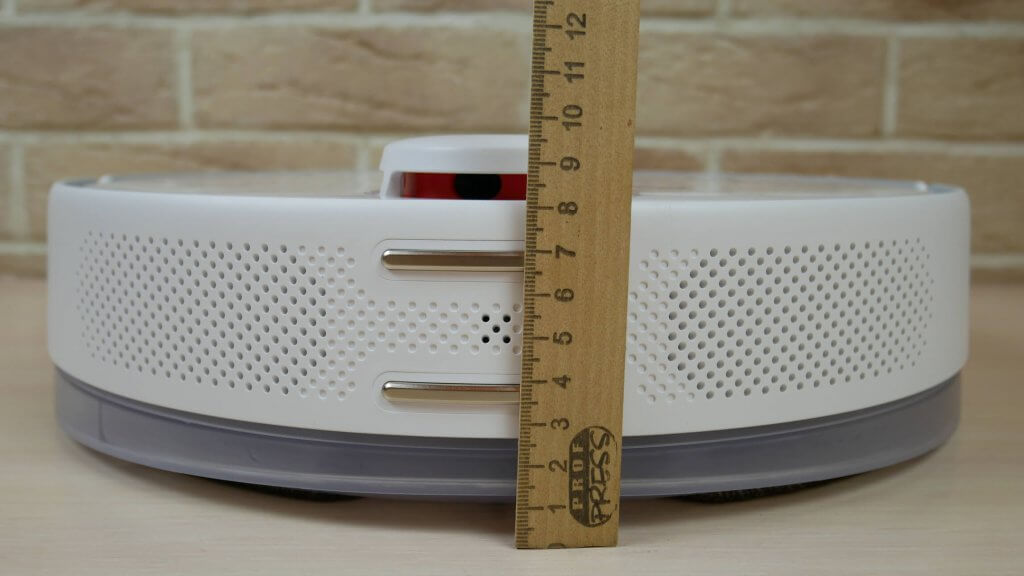
The Lidar’s case is on springs, which allows it to go underneath furniture and not get stuck. On the top are two mechanical buttons: start/pause and immediate return to base for charging.
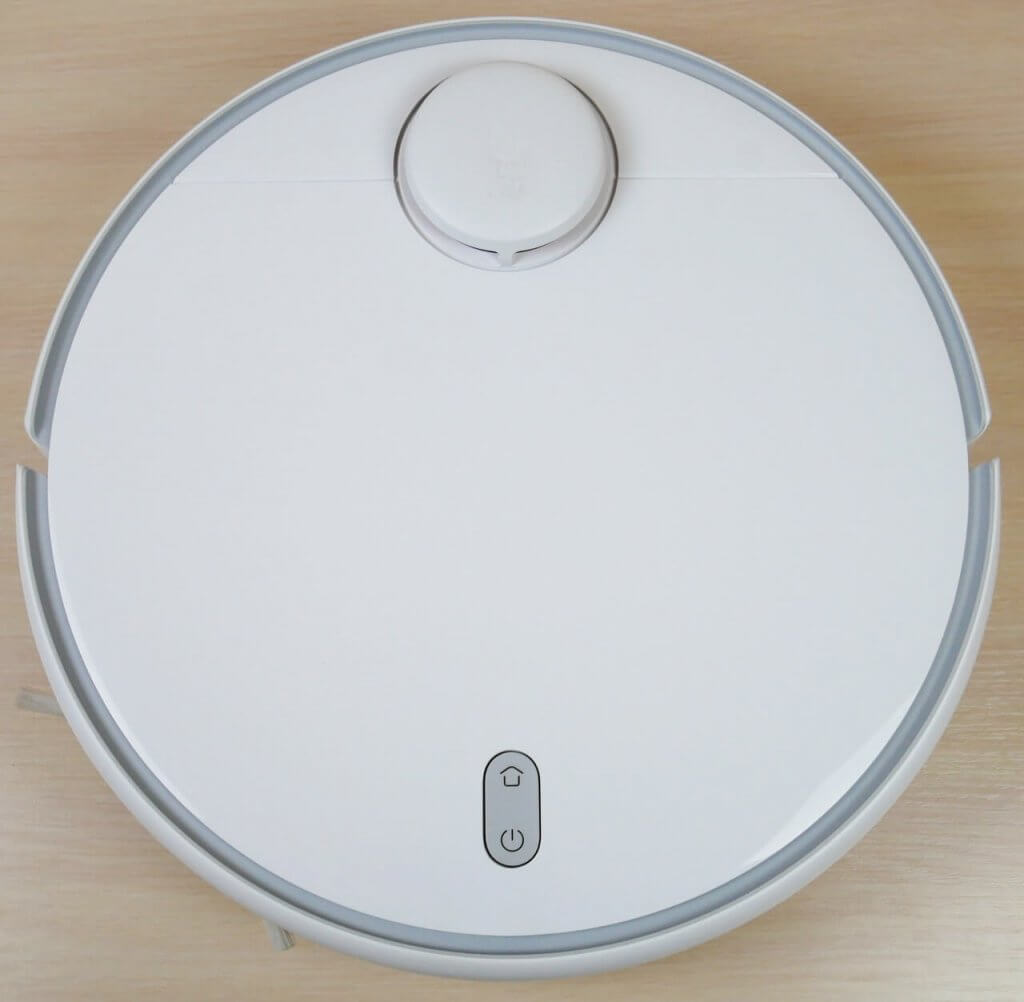
The dust container is under the top lid. The filtration system is MESH and HEPA-filter.

Now let’s look at the robot from below. It has 6 anti-fall sensors. There is only one side brush, it has 3 sides and is attached with a screw.
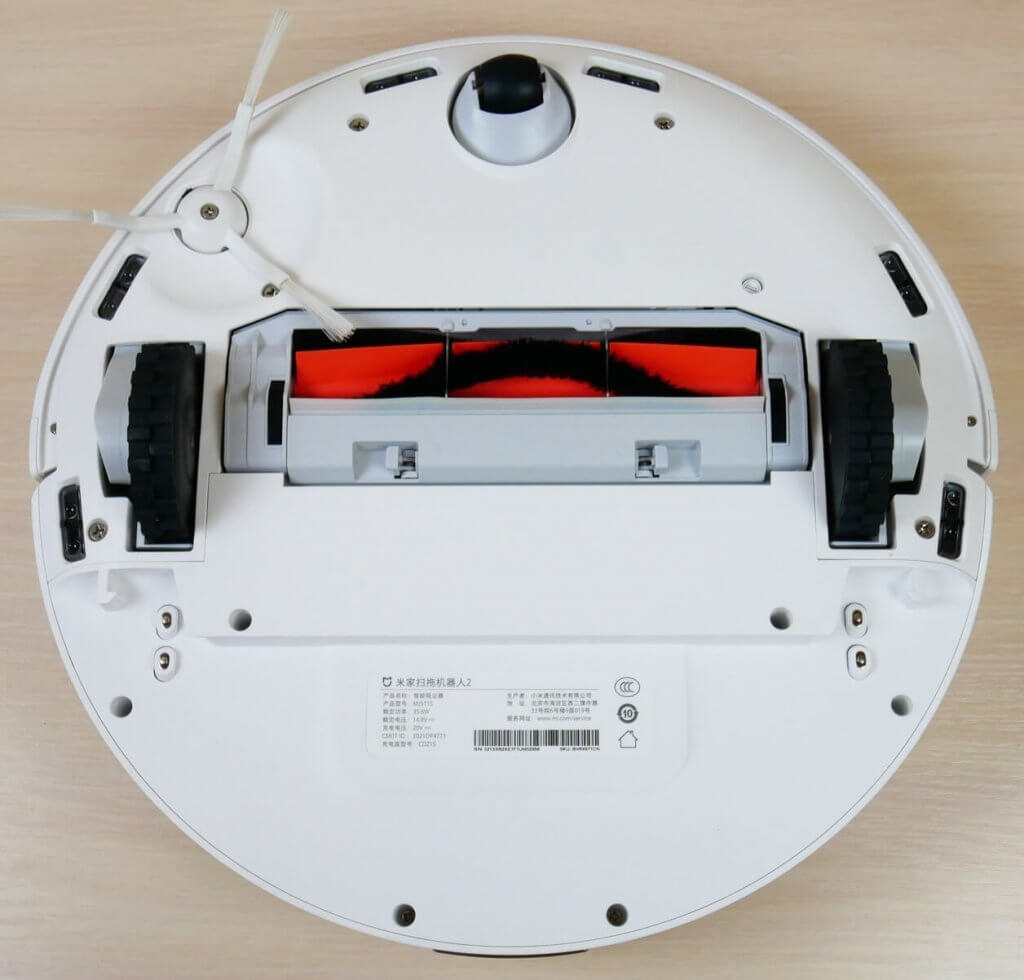
As we can see, the central brush is much better now, then it was in Mijia LDS: it has more hairs and can be taken off from both sides. This is very good. Adding to that, the brush’s movements are fluid, allowing it to blend in to the surface better.
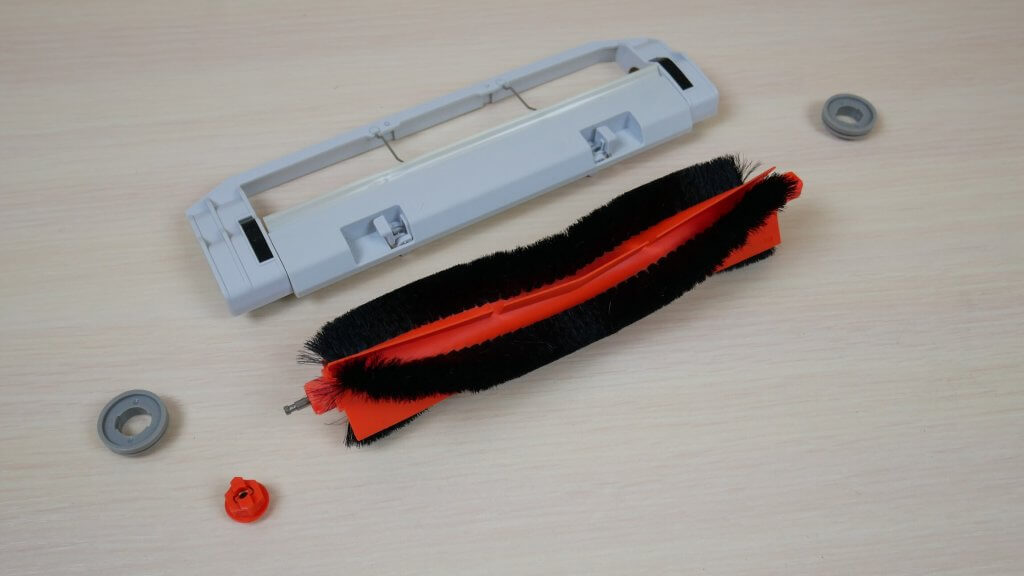
The water container is attached from the bottom. Let me remind you, that in the last model, only the holder for the cloth was attached, and the container was conjoined with the dirt container. The cloth is bald on the sides, so be warned that along the baseboard there will be a small streak line. Inside the container is a module that vibrates the container. It can fit up to 6.4 ounces of water, or 190 ml.
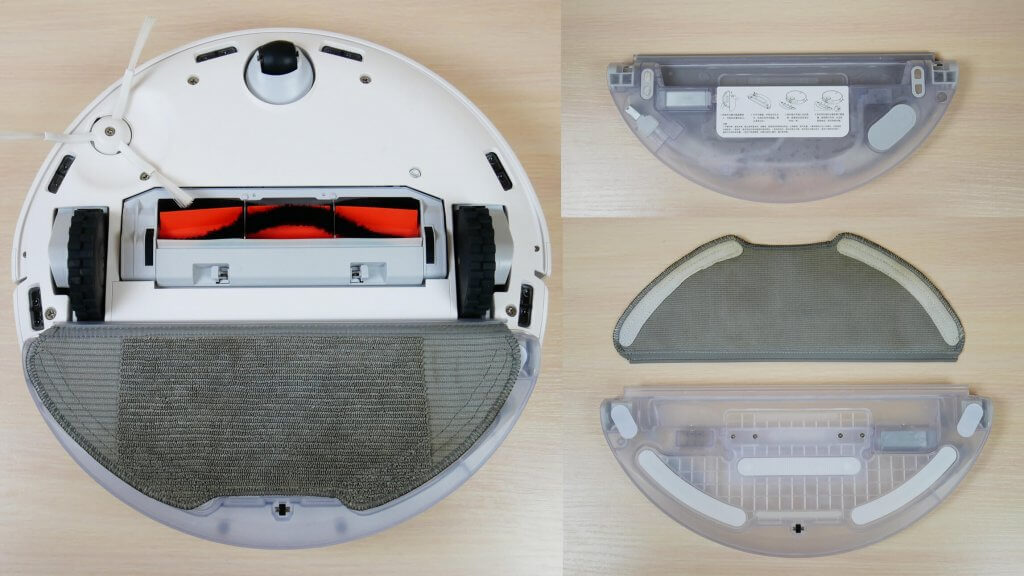
All in all, Xiaomi Mijia Robot Vacuum Mop 2’s cleaning quality has increased a bit from the last model with the addition of: a newer central brush, 2 anti-falling sensors, and the water container is now separate from the dirt container, which adds space to both.
Technical Features
Xiaomi Mijia 2 main features, labeled by the manufacturer:
- Battery Li-Ion 3200 mA*h.
- Suction power up to 2800 Pa.
- Battery life up to 110 mins.
- Cleaning area is 590 ft (180 sq.m).
- Dust container 18.5 Oz (550 ml).
- Water container 6.4 Oz (190 ml.).
- Obstacle size up to .78 inches (20 mm).
- Size: 13.7×3.7 inches (350*95 mm).
The characteristics show major improvement in the suction power: 2800 pa, compared to the 2100 pa in Mijia LDS. The other characteristics didn’t change. Only the controversial topic of the container size. I couldn’t find the accurate measurements. LDS has 18 and a half ounces or 550 milliliters, while Mijia 2 has visually the same measurements. Unfortunately, I didn’t have the other version, so I couldn’t compare the two side by side. Different sites say different things: so basically from 15-18.5 ounces or 450-550 ml. If you know for sure, make sure to tell us in the comments down below. But I still don’t think that it changed that much.
Functionality
Now let’s move on to Xiaomi Mijia Robot Vacuum Mop 2 functions. The robot is controlled through the Mi Home app. That said, the robot is Chinese, and you need to connect it to the Chinese region. You shouldn’t really have problems with this step.
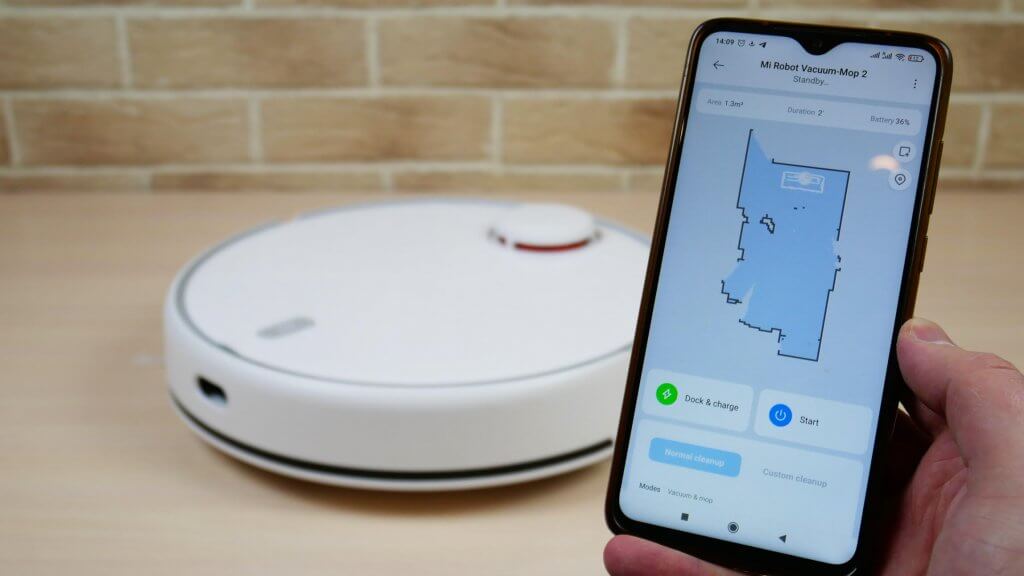
The app’s interface is in English, which is really good. On the home page the robot builds a map of the area, and automatically zones it into rooms. With the press of a button you can chose the rooms that need cleaning. Right of the map are two more modes: cleaning in the selected zone and local cleaning.
If you swipe up you can access the menu, in which you can find the main work parameters. For the first time there is an option to choose of three modes: vacuum, vacuum and mop, and just mop. Below are the regulations for suction power and cloth wetness. If you press on “Custom Cleanup”, you can go more in depth with the settings. You can choose the amount of times each room is cleaned (1 or 2), cleaning mode, and individual suction power, as well as how much water gets on the cloth. You can also set the sequence in which each room is cleaned, which I really cool.
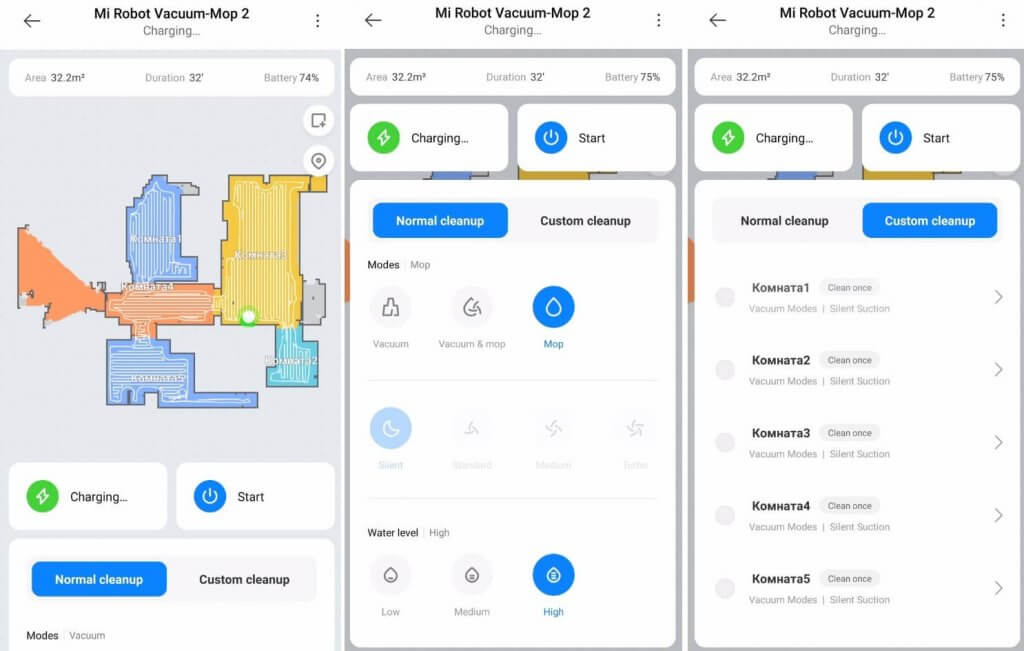
In the settings is the cleaning history, you can choose the map you need (the robot supports multimaps), and set up virtual walls and no-go zones in the needed rooms, and even put them just for mopping. You can also modify the zones and name them.
Next, we have the cleaning schedule. Here you can choose the days of the week, time, and the mode. You can modify this for every single room.
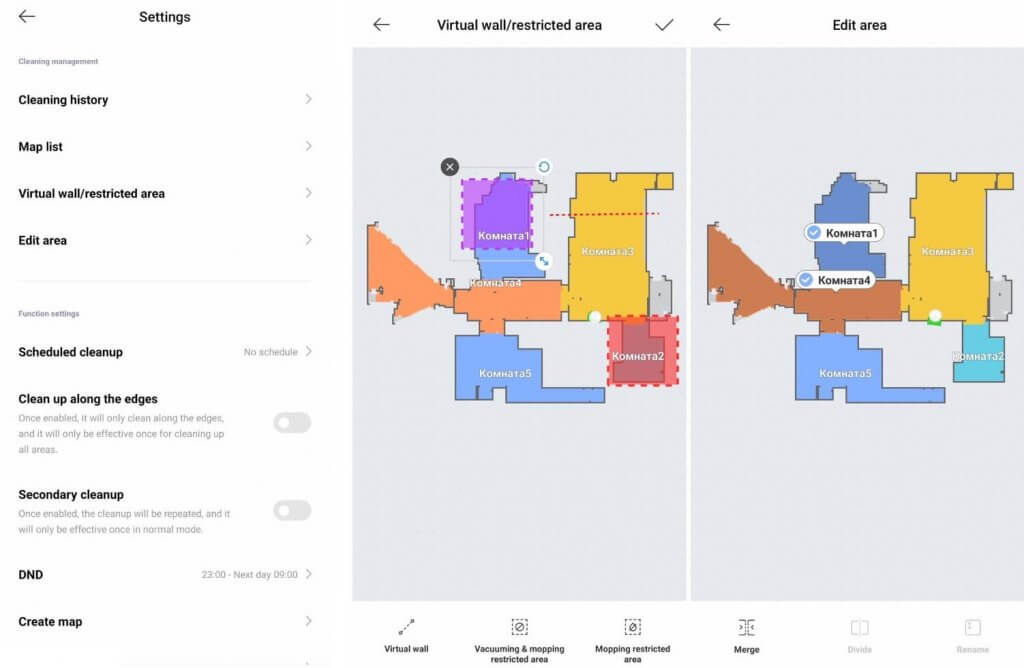
You can also clean the house by the perimeter, chose to go through twice through the whole house, set do not disturb time, get a new or delete an old map, check the water level, turn on find my robot, and set up extra parameters. Here you can turn on and off the robot’s voice, set its volume, and manage how it moves while mopping. Xiaomi Mijia Robot Vacuum Mop 2 can clean in a Y-shape, which is a benefit. You can turn the vibration on, calibrate the controls, and control the robot manually.
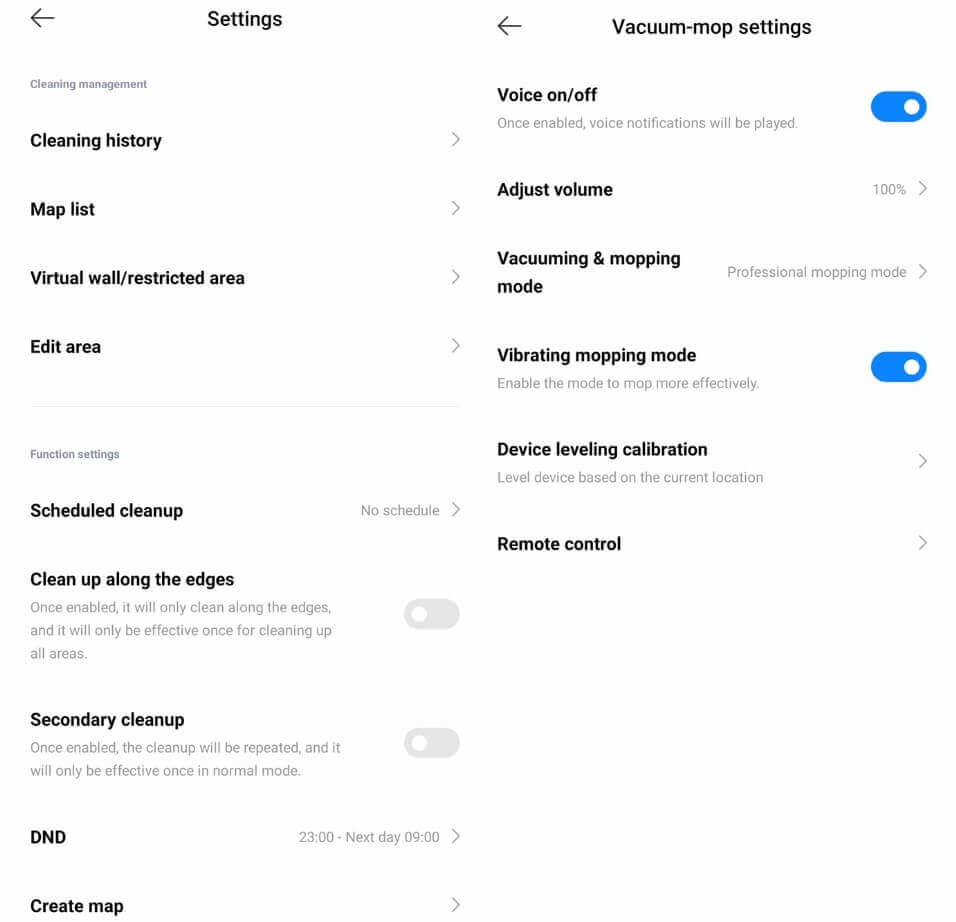
All in all, there are a lot of functions, and you can set the controls under your preferences. Only thing missing is the automatic power increase on carpets.
Testing
You can watch a detailed video review and test of Xiaomi Mijia Sweeping And Dragging Robot 2 in the video below:
Navigation
First, let’s test the robot’s navigation in a room with obstacles. First Xiaomi Xiaomi Mijia Robot Vacuum Mop 2 goes through the perimeter, after which it goes through the area in a snake like pattern. It got stuck on the rack a bit, but was able to get itself out, individually vacuumed around the boxes and all of the chair legs, and was able to return to base. Test passed successfully!
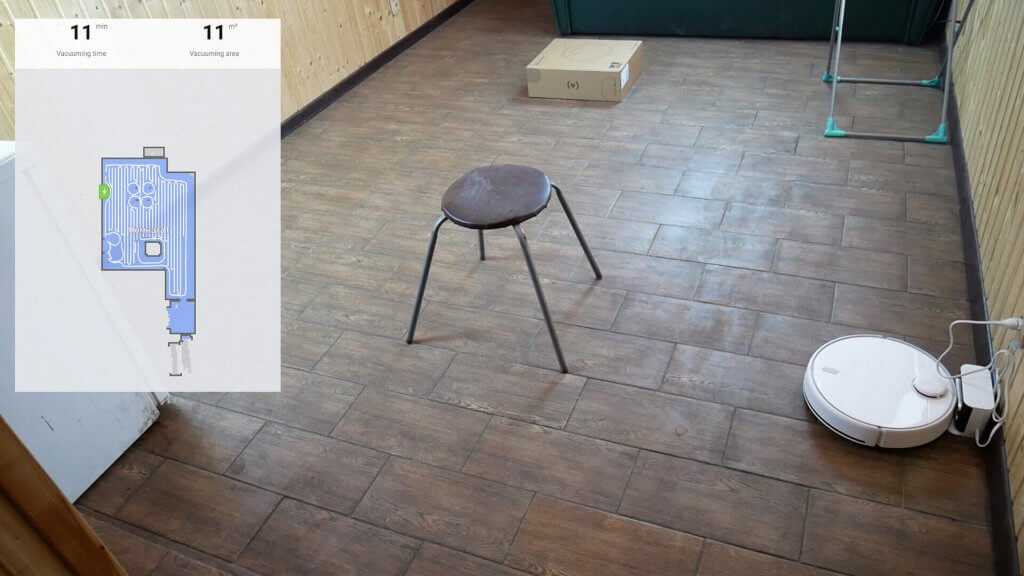
And I have complaints regarding the rest of the house. The robot went room after room by perimeter, then in a snake like pattern. There are no uncleaned areas, and the test was passed!
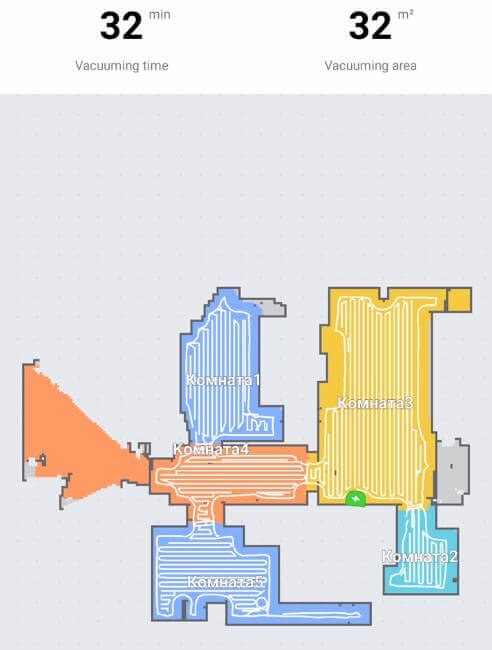
Suction power
And the suction power is perfectly standard, like in Mijia LDS, though the manufacturer stated 2800 Pa. Mijia 2, like many other Xiaomi vacuums only sucked dirt out from .078 inch or 2mm cracks. So, the higher power is all a marketing ploy. Though this is fine for daily maintenance!
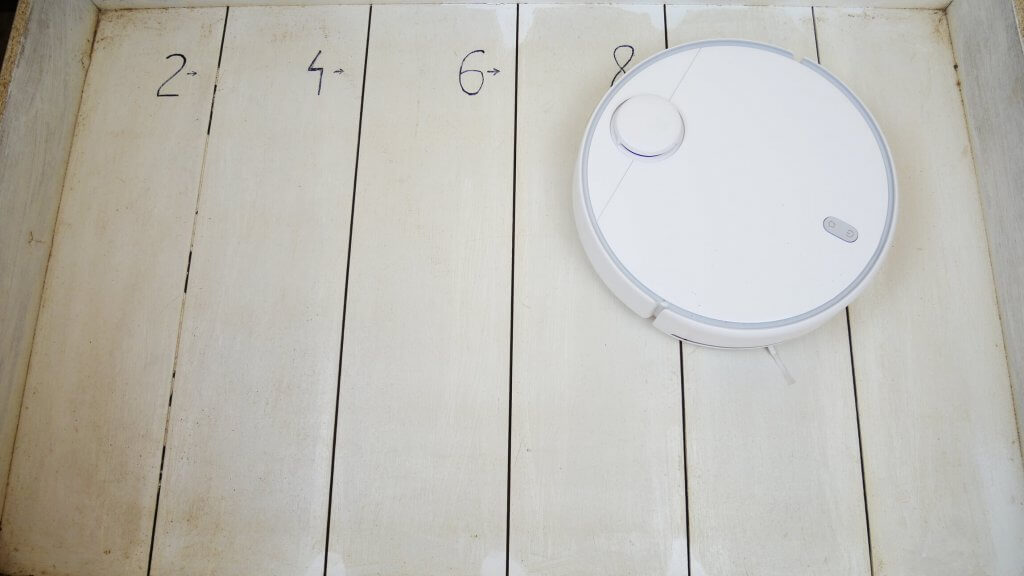
Hard floor vacuuming
The dirt collection on hard floors is good. The robot completely got all of the dirt on the stand, leaving only some in the corners, which it couldn’t get to because of its round shape. Some hair got stuck on the brush. But most of the hair is in the container, and the test is passed with flying colors!

Carpet cleaning
The carpet cleaning is average, which is a trend in Mijia vacuums. The robot leaves some dirt, and in order to get the best results, needs to go through a couple times. So, it’s far from perfect.

Mopping
And the mopping is very good. Xiaomi Mijia 2 could scrub dirt from the floor well, and didn’t leave streaks. The cloth is pushed against the floor and sucks up most of the dirt. Though we see a streak along the baseboard, which is pretty wide, and is caused by the bald spots on the cloth. And I didn’t notice that the vibration helped much, just made noise. So, the vibrating module in this version is just a marketing ploy.

But for just daily use, the mopping is perfect. And note that the robot can simultaneously vacuum and mop.
Wet cleaning on carpets
A new test that I added this year is simultaneous mopping and vacuuming on carpets. So, Xiaomi Mijia Robot Vacuum Mop 2 can’t identify carpets by itself. And so, it can’t go around them and turn off the water. So definitely put virtual walls around your carpets so the robot can’t ruin them while cleaning.
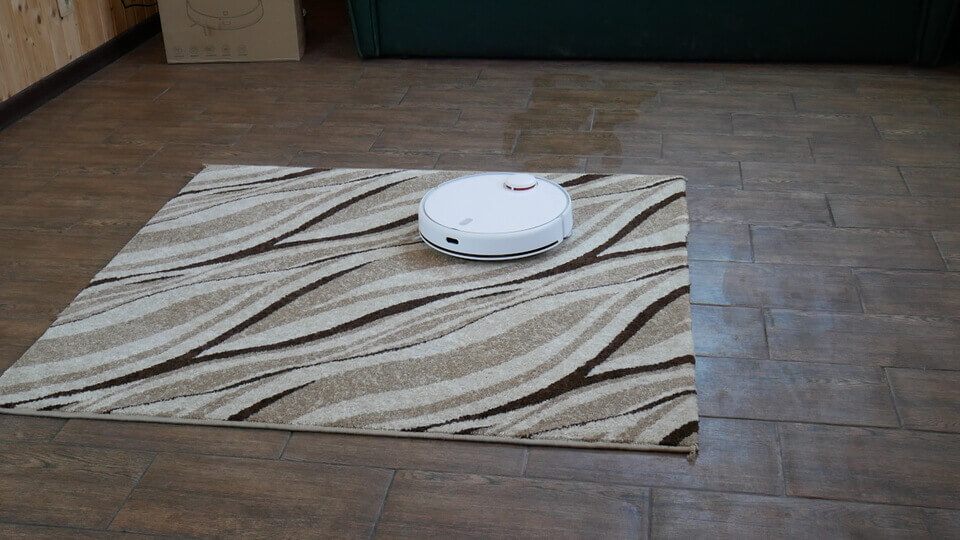
Passage of obstacles
The robot is great with obstacles, and was able to go over .78 inch or 2 cm obstacles.
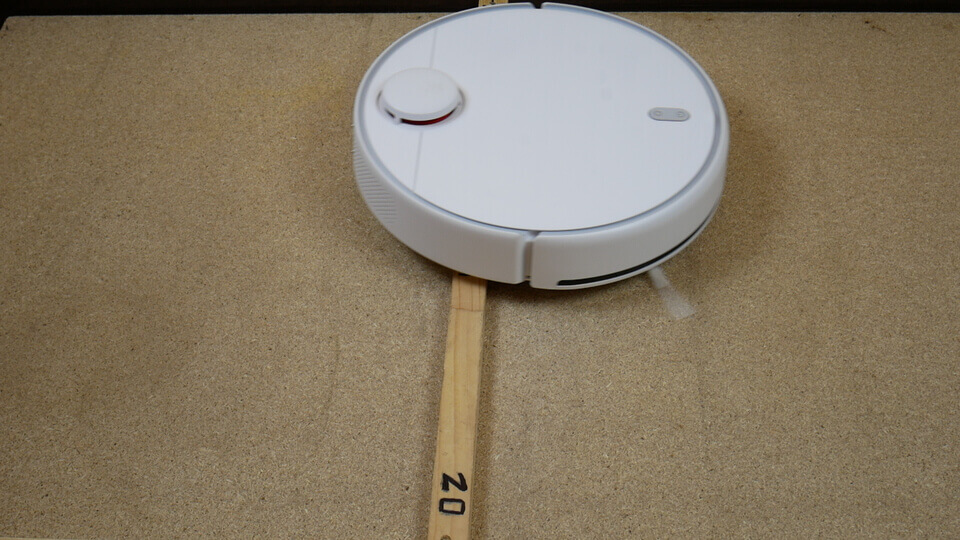
Passage of dark surfaces
And here’s another improvement from the last version, the robot isn’t afraid of dark surfaces, and easily passes through them! This is more than I can say for LDS and many other Xiaomi vacuums, which is really good.
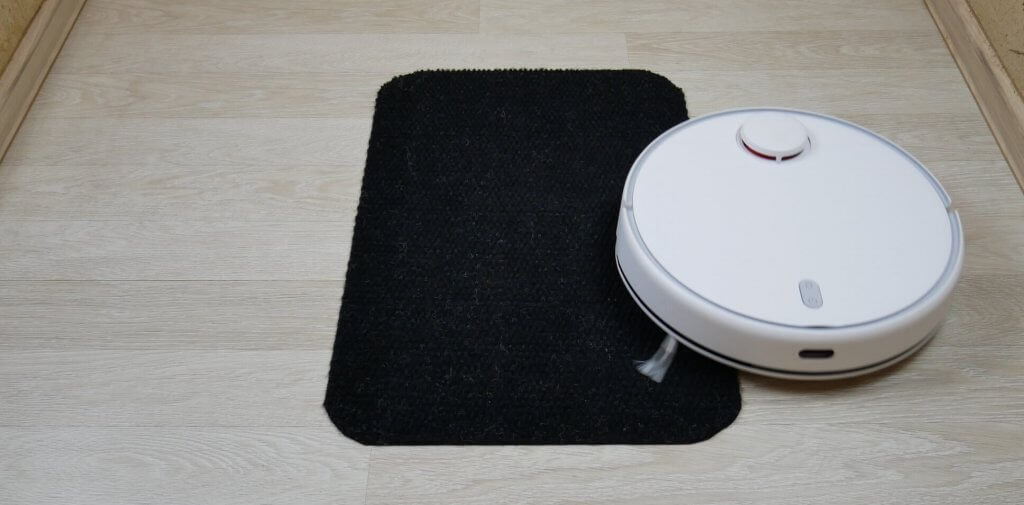
Noise level
Concluding our test, I would like to see how loud this thing really is. On quite mode the robot only goes to 60-62 dB. On standard it measures 64 dB, on medium its 65, and on Turbo it is 67.1 dB. This is compared to the 73 dB in the last model in the same mode. So, it’s clear to see that Mijia engineers put some work on the volume.
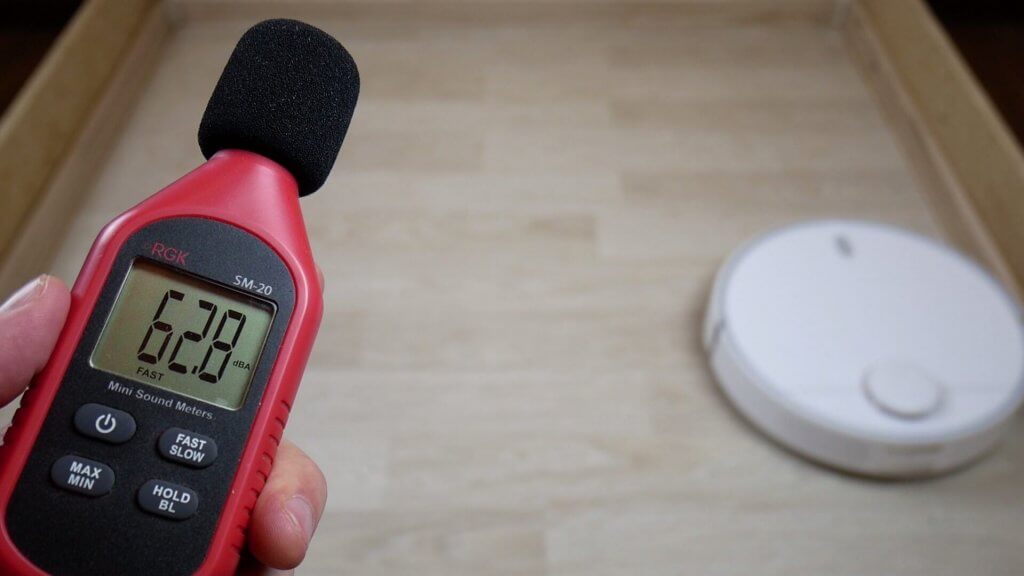
Summing up
Xiaomi Mi Robot Vacuum Mop 2 was thoroughly tested and reviewed. Our algorithm gave it a 68 out of 100, which is 4 higher than LDS. Now I’ll give my personal opinion on this vacuum’s insides. I liked the following:
- Good navigation.
- Lots of functions.
- Good mopping and vacuuming on hard surfaces.
- Simultaneous vacuuming and mopping.
- Y-shaped mopping.
- Isn’t scared of dark surfaces.
- Good with obstacles.
- The volume got lower.
- Good price, especially during sales events.
The disbenefits include:
- Low carpet cleaning quality.
- User interface is in English.
- The vacuum is made for the Chinese market.
- The vibrating module and higher suction power didn’t prove themselves useful.
In conclusion, I can say that the robot isn’t too bad and the updates made it much better, compared to Mijia LDS. In my opinion, only the carpet cleaning made it worse, but if you’re buying this just for hard floors, and your budget is around $500, then I would definitely recommend this robot vacuum cleaner. This robot definitely has more function and is much quieter.
On this note I would like to end the review. If you still have questions, make sure to put them in the comments down below. Have fun shopping, bye!

